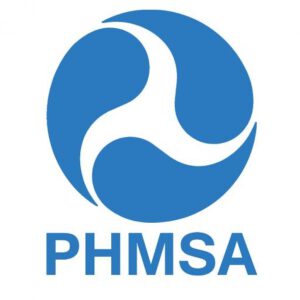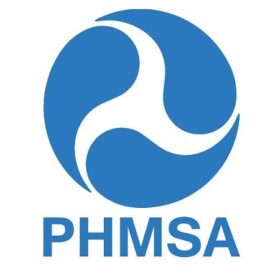
The American Gas Association (AGA), American Petroleum Institute (API), American Public Gas Association (APGA) and Interstate Natural Gas Association of America (INGAA) (jointly “the Associations”) submit these comments for consideration by the Pipeline and Hazardous Materials Safety Administration (PHMSA) concerning the “Pipeline Safety: Class Location Change Requirements” Advance Notice of Proposed Rulemaking (ANPRM).
Pipeline safety is the top priority of the Associations and our members. The Associations strongly support regulations that advance improvements in pipeline safety practices and that embrace modern integrity assessment processes and technologies, with the intent of achieving a perfect safety and reliability record for our nation’s natural gas pipeline network. The Associations commend PHMSA for taking steps, through the ANPRM, to update the obsolete regulations governing class location changes for natural gas transmission pipelines. There have been dramatic engineering and technological advances since the class location change regulations were issued in 1970, and the ANPRM represents an important opportunity to promote the continued deployment of modern integrity assessment technologies.
PHMSA should modernize its class location regulations by providing an integrity assessment option for managing natural gas transmission pipeline class location changes. Such an approach would leverage modern technologies and processes for evaluating actual pipe condition to confirm the integrity of the class change segment and target any repairs and replacements as appropriate. The specific purpose of the class location change requirements, to ensure an appropriate safety margin when population growth occurs around an existing pipeline, remains unchanged from when the rules first were adopted in 1970. This objective can now be accomplished using modern integrity assessment programs, which are a more effective, more efficient and less disruptive means of managing pipeline safety. Many stakeholders –including pipeline operators and service providers, PHMSA and state regulators, the National Transportation Safety Board, and public advocacy groups – have worked to develop, implement and enhance integrity assessment programs over the last several decades. It is because of today’s integrity assessment processes and technologies that class location changes no longer present the risk that they may have in the past.
The Associations’ interest in an integrity assessment option for managing class changes is not about saving money – rather, it’s about seizing an opportunity to allocate resources towards technologies and processes that will do the most to enhance pipeline safety. Furthermore, the construction activities necessitated by pipe replacements can cause unnecessary land disturbances, impact deliveries to consumers, result in releases of natural gas into the atmosphere and needlessly disrupt nearby landowners and communities. Instead, modern integrity assessment programs can be used to confirm pipeline integrity or identify locations where pipe condition actually warrants replacement, thereby minimizing the arbitrary replacement of pipe that is in safe, operable condition.
The Associations estimate that gas transmission pipeline operators spend $200 – $300 million annually to replace pipe solely to satisfy the current class location change regulations. The opportunity to invest resources in integrity assessment programs instead will promote the expansion of modern pipeline safety processes and technologies and therefore will be a significant step in the pursuit of perfect safety performance.
For example, for $250 million, the Associations estimate that pipeline operators would be able to make less than 75 miles of class location change pipe replacements. Alternatively, operators could assess over 25,000 miles with in-line inspection, install launchers and receivers to enable over 5,000 miles of pipeline to be assessed with in-line inspection tools for the first time, or conduct over 4,000 anomaly evaluation digs. These examples illustrate how investment in, and utilization of, modern integrity assessment programs can enhance pipeline safety following a class location change in a more effective, efficient and sustainable manner than allowed by the current class location regulations.
Therefore, there is an immediate opportunity to promote pipeline safety by aligning the class location change requirements with modern integrity assessment programs. PHMSA should develop an integrity assessment option for managing class location changes that follows the direction taken in its pending “Safety of Gas Transmission and Gathering Pipelines” regulations (2016 Proposed Gas Transmission Integrity Rules). Conducting integrity assessments for all threats that are relevant to a particular pipe segment and repairing or replacing pipe as required based on its condition will achieve the purpose of the class location change regulations.
For class location change segments managed in accordance with the integrity assessment option, operators should be required to implement the integrity assessment program requirements in the 2016 Proposed Gas Transmission Integrity Rules on an expedited basis. The Associations recommend that initial integrity assessments be required within two years of identifying the class location change. This is consistent with the timeframe required under the current class location change regulations.
The Associations strongly support the 2016 Proposed Gas Transmission Integrity Rules, with the revisions endorsed by the Gas Pipeline Advisory Committee (GPAC). The 2016 Proposed Gas Transmission Integrity Rules will enhance and expand, to many new areas, the application of integrity assessment programs that have been part of PHMSA’s regulations for almost 15 years. These regulations provide comprehensive requirements that guide how operators employ modern pipeline assessment technologies. The 2016 Proposed Gas Transmission Integrity Rules have been reviewed by PHMSA’s GPAC over the past two years and enjoy broad support from public, federal, state and industry representatives. These proposed rules will establish gas transmission pipeline safety objectives for at least the next two decades. PHMSA should now align the class location change regulations with the direction of the broader pipeline safety program. The 2011 reauthorization of the Pipeline Safety Act directed PHMSA to consider this update to the class location change regulations.
It is not necessary for PHMSA to develop brand new, unique integrity management processes for class location changes. This would be counterproductive, because it is likely that the deployment of modern integrity assessment technologies would be hindered while operators wait years for PHMSA to complete yet another protracted rulemaking.
Integrity assessments for class change segments should be conducted in accordance with the 2016 Proposed Gas Transmission Integrity Rules and operators should be required to utilize specific modern internal inspection technologies, as further detailed in these comments. A technology-based integrity assessment method for managing class location changes will promote more tailored solutions and investments in projects that will do the most to ensure pipeline safety. Specifically, this new option for managing class location changes will:
- Spur further deployment of modern internal inspection technologies;
- Incentivize operators to modify more pipe segments to allow internal inspections;
- Maximize the benefit of the 2016 Proposed Gas Transmission Integrity Rules and encourage early adoption;
- Avoid unnecessary pipe replacements and the associated construction activities, which can cause land disturbances, impact deliveries to consumers, result in releases of natural gas into the atmosphere and needlessly disrupt nearby landowners and communities;
- Promote continuous development of new and improved assessment tools; and
- Reduce the need for PHMSA staff to process individual special permit requests.







